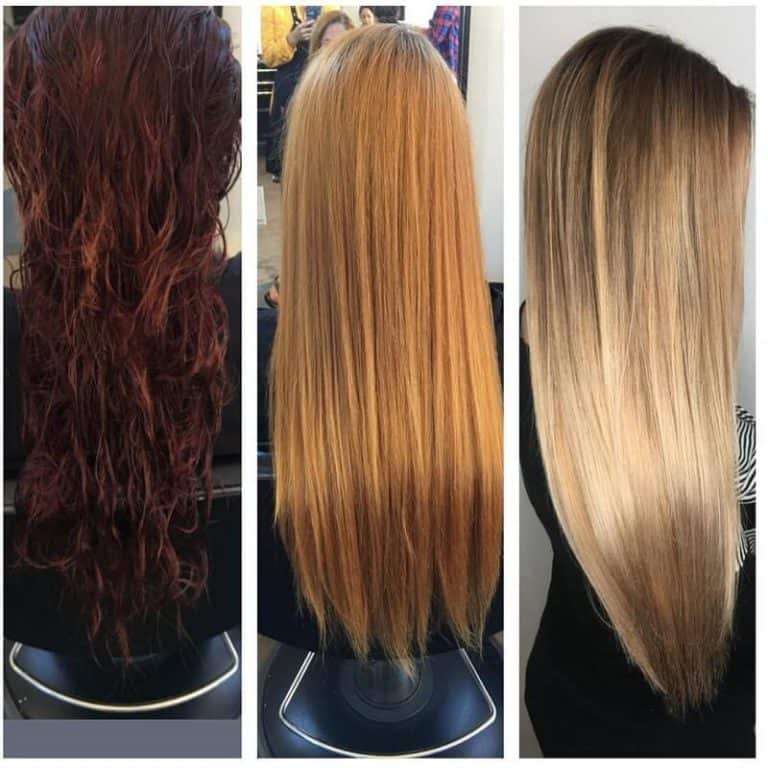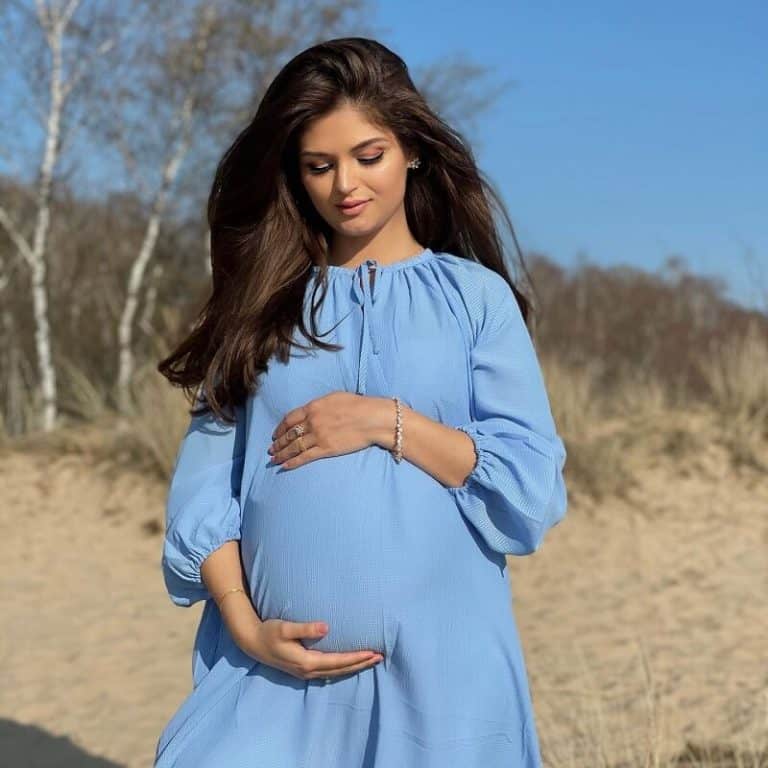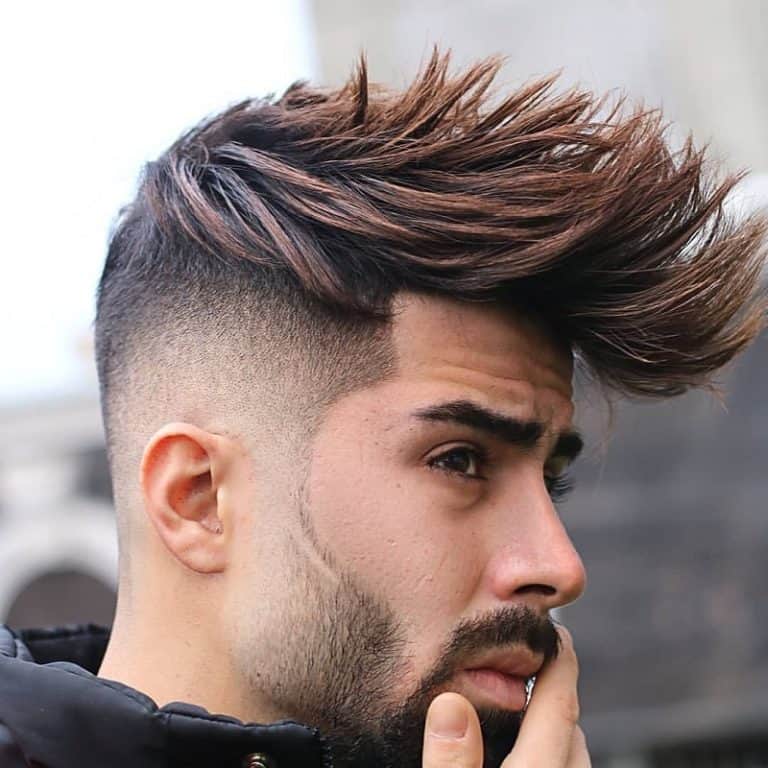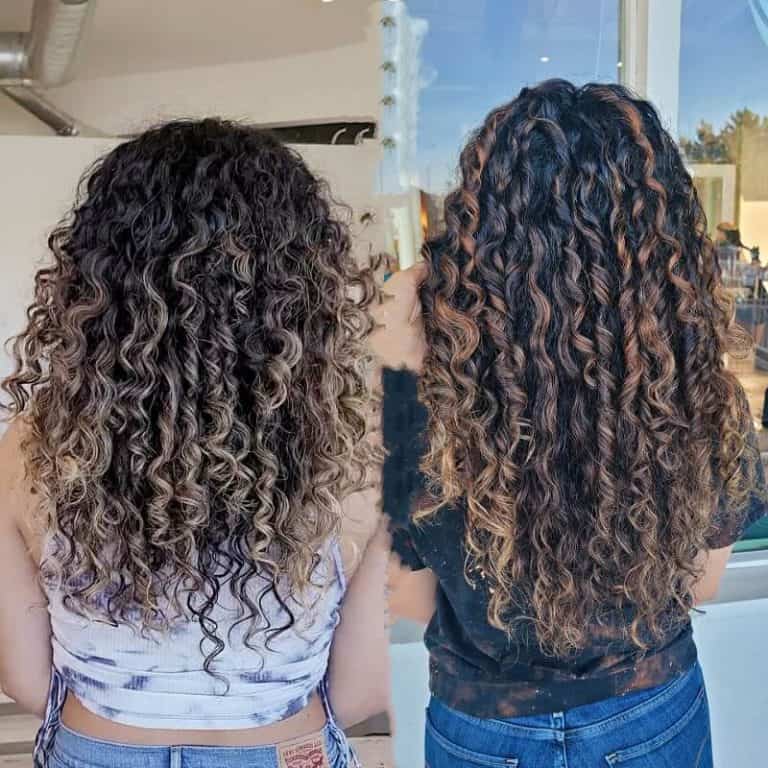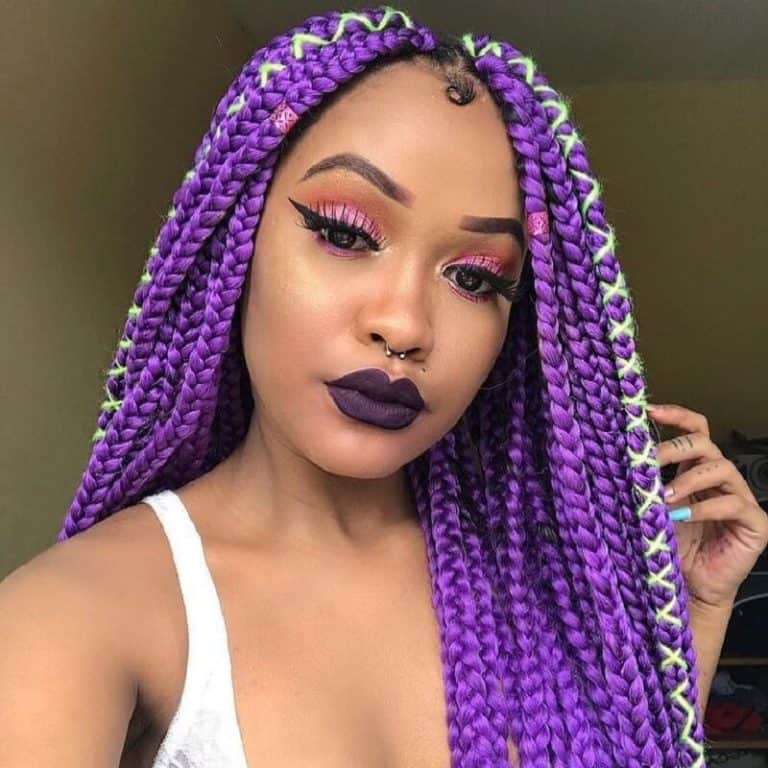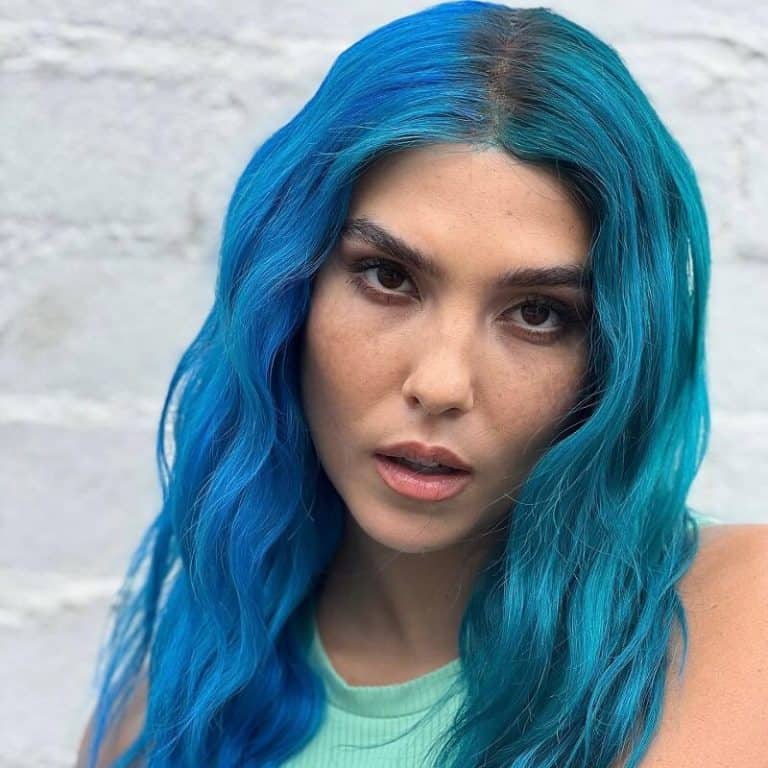How Long Does Your Hair Need to Be for Braiding?
Braiding the hair is a traditional way of wearing your hair. Most women learn how to braid their hair from a young age. This knowledge is then passed across the family and through generations.
Sometimes, men know how to braid hair, too, learning from their mothers, wives, or daughters. Whether you are a man or woman, wearing a braid is one of the easiest and most comfortable ways to wear your hair.
History of Braids
Braided hair is not a new trend; it has been a popular hairstyle across several cultures since 3500 BC or earlier. In 3500 BC and after, braids have assumed a cultural, ethnic, and historical identity that can be traced to several regions of the World.
Reports and historic findings reveal that the people of Namibia braided their hair as a means of identification. This shows that braiding was a social art and an indication of social status.
While there may be a distinction between the African braiding system and other cultures, the results are similar if not the same. Despite the variation, the style remains versatile.
The traditional cornrows, box braids, and halo braids have been linked to African countries. However, Native Americans, Europe, China, and the Caribbean are credited for pigtail braids, crown braids, staircase braids, and modern cornrows, respectively.
Types of Braids
The braid structure allows for a complex and simple alignment which is usually flat and stranded. Therefore, braids may be classified according to their structuring. All braids have some features in common:
- They appear narrow.
- Braids have a zig-zag structure that overlaps.
- The process depends on the type, but all are similar.
1. French Braid
A french is typically a three-stranded braid that can gather your hair together in a simple plait. A major difference between a french raid and a three-stranded braid is that the french braid takes more hair volume.
Also, it spreads the weight of the plait across the scalp. Therefore, it is an ideal way to keep your hair out of your face.
The name ‘french braid’ reportedly appeared in a magazine in 1871. It was used in writing by Arthur’s Home Magazine and described as a hairstyle. Many hair enthusiasts believe this writing plays a key role in the history of french braids.
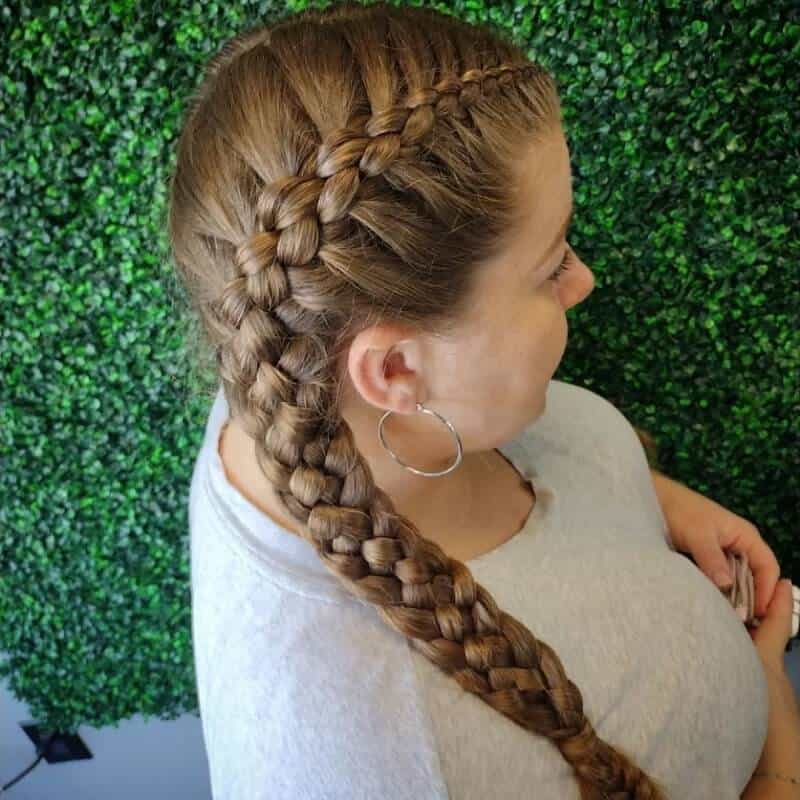
2. Rope Braid
The rope braid is called a ‘rope twist or a twisted braid.’ In this style, the hair is sectioned into two parts compactly twisted around each other. When done properly, the rope braid gives your hair a new look when you twist it; it curls for some and waves for others.
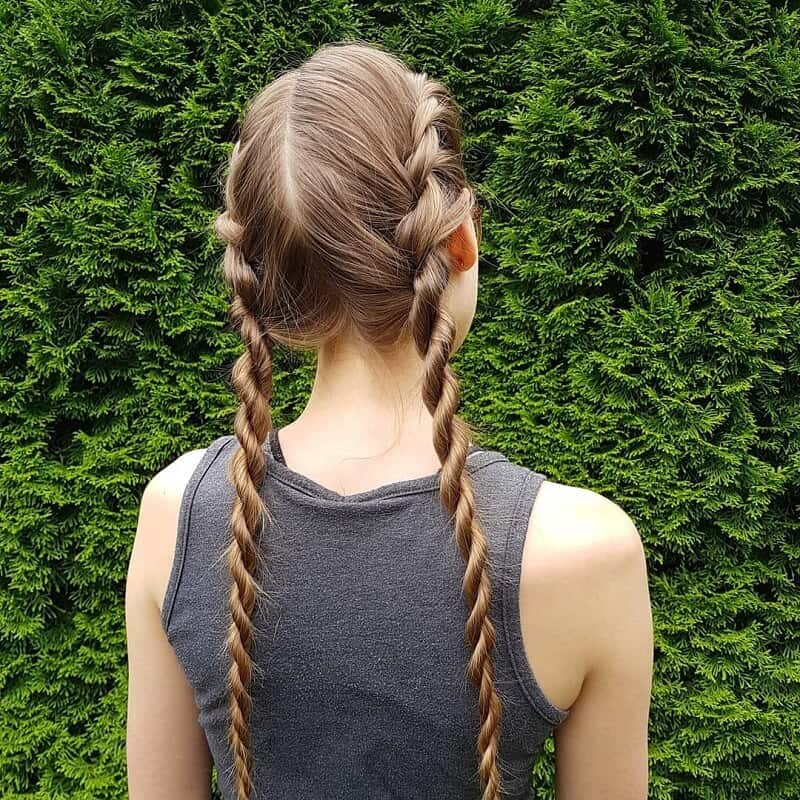
3. Three Stranded Braid
The three-stranded braid is a basic type of braid that is common in the African region. However, it is probably the braid most girls grew up doing alone. The braid is done in different sizes and shapes. For example, box braids, etc.
4. Fish Tail Braid
The style is in the name. A fishtail braid weaves sections of your hair thinly and intricately. The effect is similar to the scale on a fish’s tail, giving a symmetrical effect regarding the length of your hair.
5. Dutch Braid
Making your hair into a dutch braid is the reverse form of a french braid. Therefore, the dutch braid can be done in several styles depending on the wearer’s preference.
6. Pull Through Braid
Pull-through braids are more popular among women who love trends and those with thin hair. The style is a collection of several ponytails pulled together in a simple braid.
This not only provides a braided effect but is also versatile, giving your a volume it may not have originally.
7. Reverse Braid
Rather than begin from the front section of your head, the reverse braid starts from the back. It goes from the nape of your neck so that it can be held in a bun or allowed to fall free. The reverse braid is also an innovative way of rocking your ponytail.
8. Waterfall Braid
These braids are so beautiful. They are sported by brides, bridesmaids, and other women who enjoy looking like their imaginations. It is possible that waterfall braids were common in the early years of braids because they can be reimagined and incorporated into diverse styles.
Related: Can You Dye Braiding Hair?
Is My Hair Long Enough for a Braid?
Your hair can go in a braid at any length. However, the answer to that question depends on the kind of braid you have in mind. If you want to make the standard three-stranded braid, your hair should be at least two inches long. Also, the stylist can apply good hair products for a better grip. However, five inches may be a starting point if you want a good french braid or other braids discussed in the previous section.
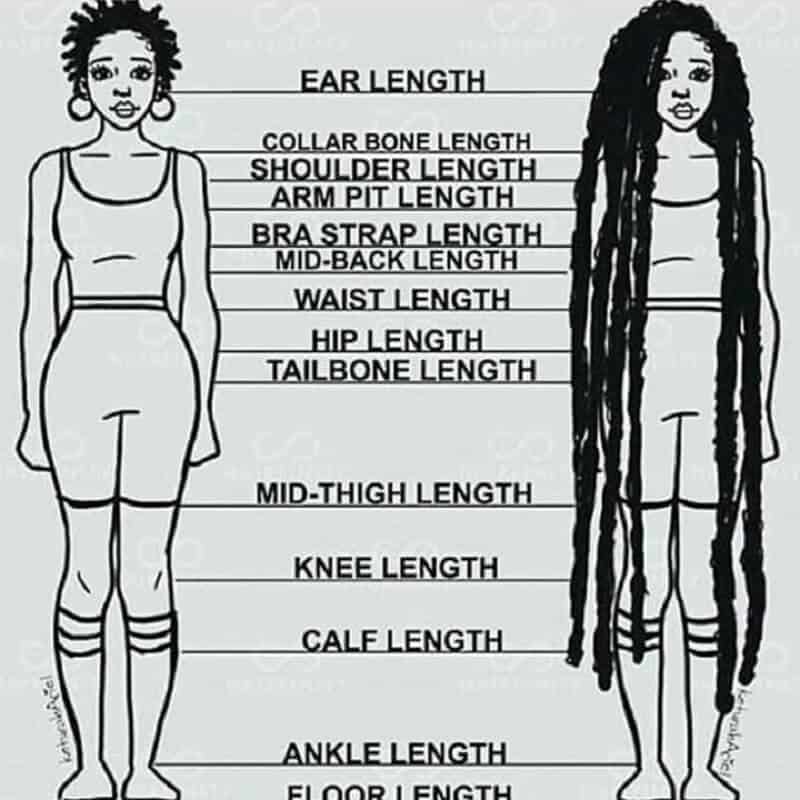
Related: How Long is 6 Inches of Hair?
What Kind of Hair is Good For Braid?
There is no one-size-fits-all hair texture for a braid. But here are some tips for different hair textures.
- Curly and coily hair may be pointy, but they add the right volume to your hair. So, these make the best messy braids and are also very defined. With the right product, you can keep the hair in place.
- Wavy locks are easier to work into a braid. They provide the desired results as long as you are systemic in your approach. Wavy hair is probably best for french and fishtail braids.
- Straight hair is easy to texturize. You can make this into any form of braids. Adding the right product keeps them elegant and secure.
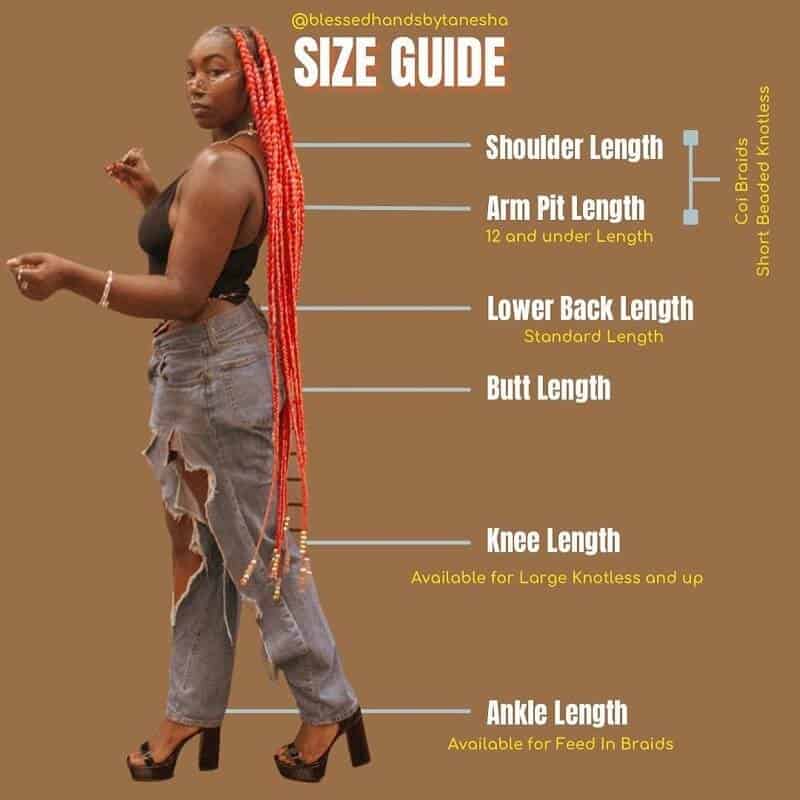
Tips For Braiding
- If you want your braids to be neat, ensure that your hair is long enough to achieve the desired look.
- While wet hair may be easier to work into a braid, wet hair is more likely to cause your hair to break.
- Women with shorter hair can achieve their desired look with good hair products.
- Pulling your hair tight when making a braid damage the hair in the long run.
- Your facial features matter. Although almost anyone can wear a braid, oval, square, and diamond-shaped faces are more flattering.
Final Thoughts
For best results, your hair should be at least two inches long before you try a braid. However, short hair is more challenging to work on than longer hair.
Therefore, you may consider consulting a stylist, mastering the right technique, and even using hair products to get a good grip on your hair. Alternatively, consider hair extensions. Or allow your hair to grow.

